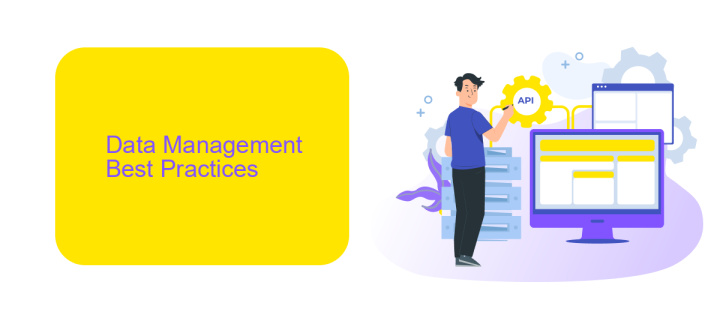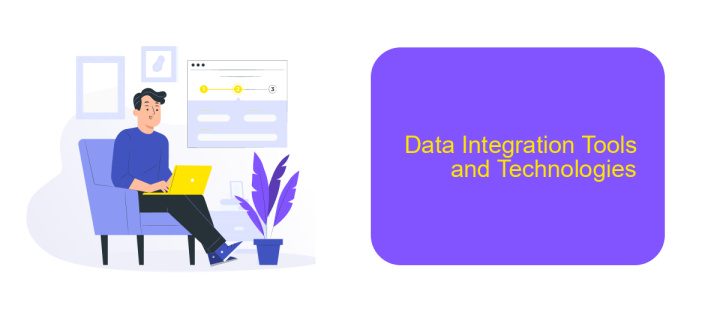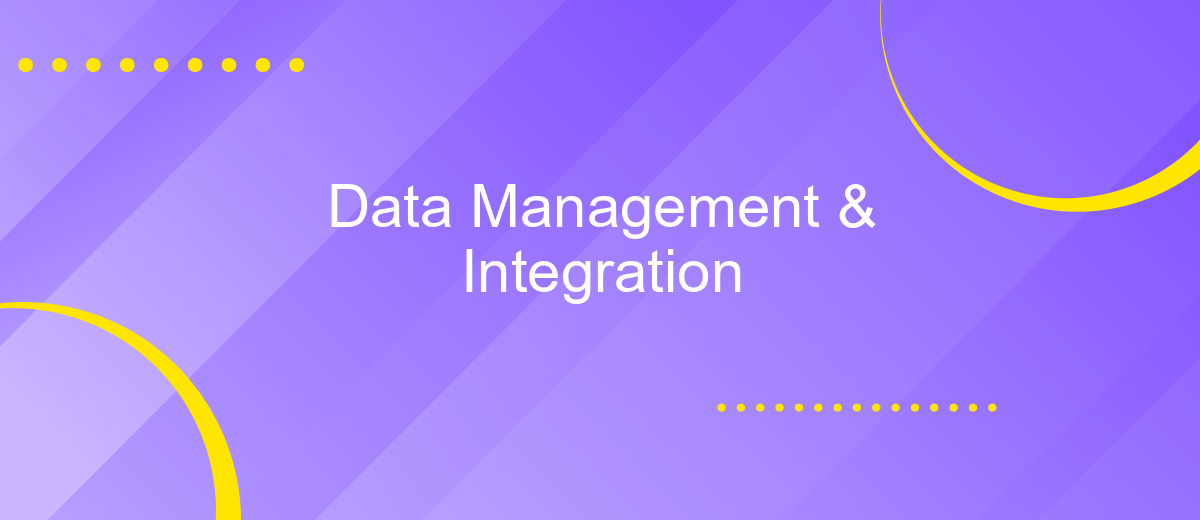Data Management & Integration
In today's data-driven world, effective Data Management and Integration are crucial for businesses aiming to harness the full potential of their information assets. By seamlessly combining and organizing diverse data sources, organizations can achieve enhanced decision-making, operational efficiency, and strategic insights. This article delves into the key principles and best practices for optimizing data management and integration processes.
Data Management and Integration Overview
Data management and integration are critical components in modern business operations. Effective data management ensures that data is accurate, consistent, and accessible, while integration allows different systems and applications to work together seamlessly. Together, they enable organizations to harness the full potential of their data, driving better decision-making and operational efficiency.
- Data Quality Management
- Data Storage Solutions
- Data Security and Compliance
- System Integration
- API Management
One of the key tools for managing integrations is ApiX-Drive. This service simplifies the process of connecting various applications and automating workflows. With ApiX-Drive, businesses can easily set up integrations without needing extensive technical expertise, ensuring that data flows smoothly between different systems. This not only saves time but also reduces the risk of errors, making data management and integration more efficient and reliable.
Data Management Best Practices

Effective data management begins with establishing clear data governance policies. This involves defining data ownership, setting data quality standards, and implementing data security measures to protect sensitive information. Regular audits and compliance checks are essential to ensure adherence to these policies. Additionally, leveraging data management tools can streamline processes and enhance data accuracy. For instance, automated data validation and cleansing tools can help maintain data integrity across various systems.
Integration of data from multiple sources is crucial for comprehensive data analysis. Utilizing integration platforms like ApiX-Drive can simplify this process by enabling seamless data flow between different applications. ApiX-Drive offers a user-friendly interface and robust features to automate data transfers, reducing manual efforts and minimizing errors. By adopting such integration services, organizations can achieve real-time data synchronization, leading to more informed decision-making and operational efficiency. Continuous monitoring and optimization of these integrations are vital to ensure they remain effective and aligned with business objectives.
Data Integration Techniques

Data integration is a critical process in modern data management that involves combining data from different sources into a unified view. Effective data integration techniques are essential for ensuring data consistency, improving data quality, and enabling comprehensive data analysis.
- ETL (Extract, Transform, Load): This traditional technique involves extracting data from various sources, transforming it into a suitable format, and loading it into a target system.
- Data Virtualization: This method allows users to access and manipulate data in real-time without needing to know where it is physically stored.
- API Integration: Tools like ApiX-Drive facilitate seamless integration by connecting different applications and automating data transfer through APIs.
- Data Warehousing: Consolidates data from multiple sources into a single repository, enabling efficient querying and reporting.
- Data Federation: Integrates data from disparate sources and presents it as a single virtual database, without physically moving the data.
Choosing the right data integration technique depends on the specific needs and architecture of your organization. Tools like ApiX-Drive can simplify the integration process by providing a user-friendly interface for setting up and managing data flows between various applications, ensuring smooth and efficient data operations.
Data Integration Tools and Technologies

Data integration is a critical component of modern data management strategies, enabling organizations to consolidate disparate data sources into a unified view. This process facilitates better decision-making, improved data quality, and streamlined operations. Various tools and technologies are available to assist in achieving seamless data integration.
One such tool is ApiX-Drive, a service designed to simplify the integration process by allowing users to connect multiple applications and automate data flows without requiring extensive technical knowledge. ApiX-Drive supports numerous platforms and offers a user-friendly interface to set up and manage integrations efficiently.
- ETL (Extract, Transform, Load) Tools
- Data Integration Platforms
- API Management Solutions
- Middleware Solutions
- Cloud-based Integration Services
By leveraging these tools and technologies, organizations can ensure that their data is accurately and consistently integrated across various systems. This not only enhances data accessibility but also supports more robust analytics and reporting capabilities, ultimately driving better business outcomes.
Data Management and Integration Case Studies
In recent years, various organizations have successfully leveraged data management and integration to enhance their operations. For instance, a leading retail company integrated their disparate data sources using advanced ETL (Extract, Transform, Load) tools. This integration enabled them to unify their customer data, resulting in more personalized marketing campaigns and a significant increase in sales. Additionally, they utilized real-time data synchronization to ensure that their inventory levels were always up-to-date across all sales channels, reducing stockouts and improving customer satisfaction.
Another notable example is a healthcare provider that streamlined their patient data management by integrating multiple electronic health record (EHR) systems. By employing a robust data integration platform like ApiX-Drive, they were able to automate data workflows between different departments, reducing manual data entry errors and improving the accuracy of patient records. This integration not only enhanced operational efficiency but also facilitated better patient care by providing healthcare professionals with a comprehensive view of patient histories. These case studies highlight the transformative potential of effective data management and integration across various industries.
FAQ
What is Data Management & Integration?
Why is Data Integration important for businesses?
What are the common challenges in Data Management & Integration?
How can automation help in Data Integration?
What should be considered when choosing a Data Integration tool?
Time is the most valuable resource for business today. Almost half of it is wasted on routine tasks. Your employees are constantly forced to perform monotonous tasks that are difficult to classify as important and specialized. You can leave everything as it is by hiring additional employees, or you can automate most of the business processes using the ApiX-Drive online connector to get rid of unnecessary time and money expenses once and for all. The choice is yours!

